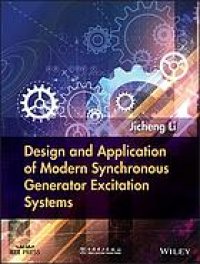
Ebook: Design and application of modern synchronous generator excitation systems
Author: Li Jicheng
- Tags: Electric machinery Synchronous., Electronic excitation., Machines synchrones., Excitation électronique.
- Year: 2019
- Publisher: Wiley-IEEE Press
- Language: English
- pdf
« This book systematically introduces the important technologies of design and application of the synchronous generator excitation system, including the three-phase bridge rectifier circuit, diode rectifier for separate excitation, brushless excitation system and the static self-stimulation excitation system. It fuses discussions on specific topics and basic theories, providing a detailed description of the theories Read more...
Abstract: « This book systematically introduces the important technologies of design and application of the synchronous generator excitation system, including the three-phase bridge rectifier circuit, diode rectifier for separate excitation, brushless excitation system and the static self-stimulation excitation system. It fuses discussions on specific topics and basic theories, providing a detailed description of the theories essential for synchronous generators in the analysis of excitation systems. Design and Application of Modern Synchronous Generator Excitation Systems provides a cutting-edge examination of excitation systems, addressing conventional hydro-turbines, pumped storage units, steam turbines, and nuclear power units. It looks at the features and performance of the excitation system of the 700MW hydro-turbine deployed at the Three Gorges Hydropower Plant spanning the Yangtze River in China, as well as the working principle and start-up procedure of the static frequency converter (SFC) of pumped storage units. It also expounds on the composition of the excitation transformer, power rectifier, de-excitation equipment, and automatic excitation regulator—in addition to the performance features of the excitation system of conventional 600/1000MW turbines and the excitation system of the 1000MW nuclear power unit. »